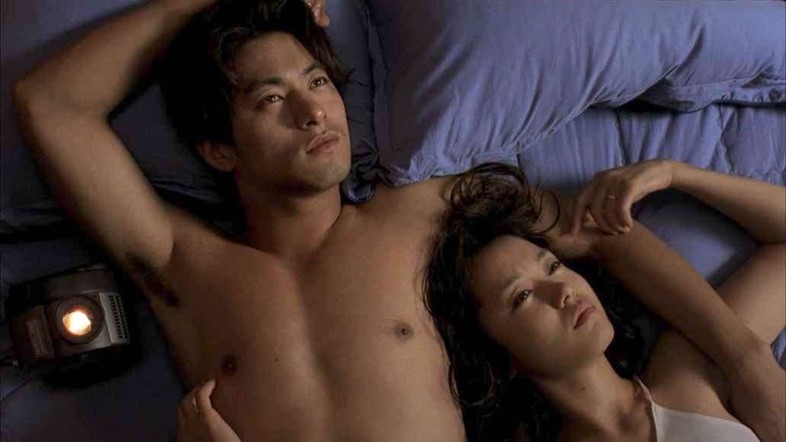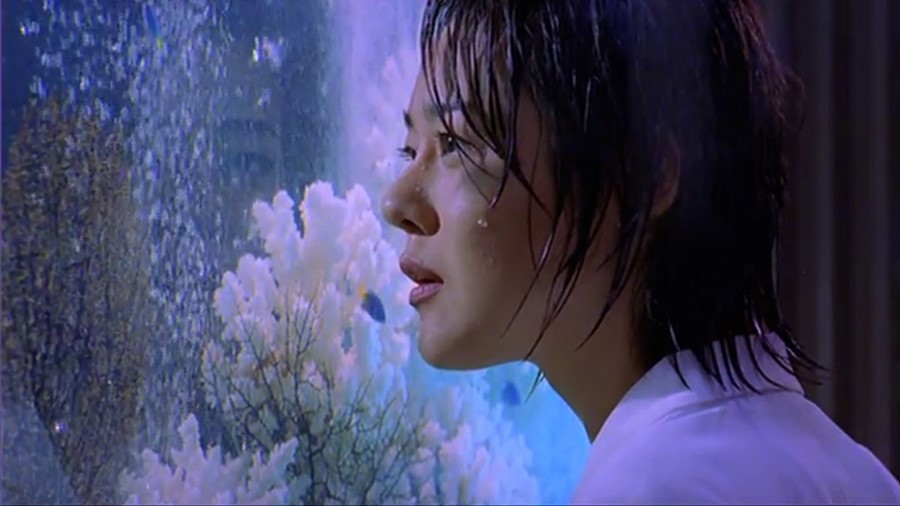To mark the 25th anniversary of the industry-galvanising hit Shiri, we share a guide to the South Korean ‘Hallyuwood’ films of the early 1990s
A post-Parasite appetite for Korean cinema remains palpable in the West in 2024, with Past Lives getting a Best Picture nod among the Academy Awards nominations just as previous winner Bong Joon-ho prepares one of the year’s most anticipated films in Mickey 17. But the new year also marks a significant anniversary for the dynamic industry we have come to refer to as ‘Hallyuwood’, with February 13 marking the quarter-century anniversary of the film release that spurred the entire original Korean wave.
In 1999, Shiri was the country’s first big-budget, Hollywood-style blockbuster: an explosive, La Femme Nikita-esque tale of South Korean intelligence agents trying to stop North Korean terrorists from blowing up a football stadium during a landmark football match between the torn nations. The movie was an unprecedented cultural sensation, catapulting actors like Choi Min-sik (Oldboy) and Song Kang-ho (Parasite) to stardom while sinking box office records previously held by Titanic – a move that instilled the entire industry with newfound confidence and ambition.
This foundational text in New Korean Cinema was the product of a total rejuvenation of the film industry rooted in the Asian Financial Crisis of 1997, which had necessitated an economic bail-out by the International Monetary Fund, an event described as “a national humiliation” by resentful natives. With widespread business bankruptcies leaving the film industry bereft of investment, only 43 local features were released in 1998, prompting new President Kim Dae-jung to announce strong financial and regulatory aid “to provide support without intervention”.
This all came in the wake of the country’s newfound democratisation, which followed decades of social oppression amidst colonisation, war, and authoritarian regimes in Korea, during which censorship and strict regulation greatly impacted the creative liberties of filmmakers. With fresh autonomy, late 90s directors were able to capitalise on the new industry support with ambitious and innovative ideas that led to major native breakthroughs. The local market share of Korean cinema grew from 16 per cent in 1993 to over 50 per cent in 2001 as Korean audiences took note, and international exposure soon followed, eventually leading to the cinematic renaissance seen all over the world today.
To mark the 25th anniversary of the industry-galvanising hit Shiri, Dazed presents a primer for other early highlights of the first Korean wave below.
PEPPERMINT CANDY (LEE CHANG-DONG, 1999)
Besides Park Chan-wook, nearly every major contemporary Korean filmmaker was handed their debut in the late 90s. The talent pool was unprecedented, with Bong Joon-ho, Kim Jee-woon and Hong Sang-soo all going on to become highly decorated and internationally renowned masters. None have yet reached the superlative filmmaking heights set by the great Lee Chang-dong, though, whose sophomore effort went on general release in Korea on the first day of the new millennium.
Told in reverse chronological order, Peppermint Candy opens with the dramatic suicide of an inconsolable man (Sol Kyung-gu) who allows himself to be killed by a train passing beside a lake. As the film goes on, the viewer learns of the events that led him to this terrible fate, with the relevance of props, characters, and lines of dialogue witnessed early on in the film gradually revealed as we delve through 20 years of his past.
Crushingly effective in its narrative execution (a given: Lee was a novelist before his filmmaking career), the production would take home Best Film, Best Director and Best Screenplay at Korea’s Grand Bell Awards that year. Lee’s follow-up film Oasis would then reunite key cast members from Peppermint Candy to win him Best Director at Venice Film Festival 2002, before Palme d’Or-nominated Burning broke new ground for Korean cinema in 2018 when it became the first native film to make an Academy Awards shortlist. New restorations of Lee’s classics will receive their US premieres in April 2024 at The Metrograph Theatre in New York, with UK screenings anticipated thereafter.
VIRGIN STRIPPED BARE BY HER BACHELORS (HONG SANG-SOO, 2000)
A classic of a different kind from the era – also screening via The Metrograph’s online platform, Metrograph at Home, as part of a series on the director – is Hong Sang-soo’s minimal, low-budget “talkie” Virgin Stripped Bare By Her Bachelors. This was already Hong’s third feature, and his second to play at Cannes in the Un Certain Regard section. The arthouse stalwart would become a mainstay of Europe’s biggest film festivals, later garnering awards such as Berlin’s Silver Bear for Best Director and the Silver Bear Grand Jury Prize.
Hong’s latter-day stylistic staples were already coming into place at the turn of the century, with Virgin Stripped Bare By Her Bachelors showcasing crisp, monochromatic images; near-static, observational camerawork; and, of course, an overlapping narrative style, built around dialogue-heavy long-takes that are later repeated with near-imperceptible deviations. The story concerns a TV producer and a low-budget filmmaker who both take an interest in an attractive young scriptwriter over a series of boozy dinners and meetings, with multiple possible outcomes depicted in the filmmaking equivalent of a game of ‘spot the difference’.
ATTACK THE GAS STATION (KIM SANG-JIN, 1999)
Riffing on the economic anxieties surrounding the late-90s financial crisis, Attack the Gas Station follows a group of delinquents with names like ‘Bulldozer’ and ‘Rockstar’ as they lay siege to an Oilbank petrol station for the second time in a week. Since they’d already bagged all the takings on their previous raid, the group (which includes future Oldboy antagonist Yoo Ji-tae) decides that this time they’ll take the proprietors hostage – and pocket the cash tended by the cops, chicks, and Chinese takeaway deliverymen who continue to swing by to fill up their tanks, instead.
Shades of Gregg Araki’s The Doom Generation are evident through the film’s nihilistic characters, vibrant colours and fashions, and even its alt-rock soundtrack, with this situational slacker-comedy serving as an emblem for the new creative freedom that filmmakers found in a revitalised industry. Before the prowling cameras and zany slapstick eventually gives way to bike stunts and brawls, there’s also time for a gag that unwittingly allegorises the country’s changing cinematic allegiances, as a Pepsi-drinking thug is chastised by a cop for “giving money to the Yankees” instead of buying Korean soft drinks.
Like Nowhere to Hide (below) and Seven-inspired noir thriller Tell Me Something, it was nominated for Best Director at the Blue Dragon Awards – but was beaten by the year’s biggest hit: Shiri.
HAPPY END (JUNG JI-WOO, 1999)

As the appetite and reception for home-grown cinema improved in Korea, a Hollywood-style star system began to emerge, with 1999 marking breakthroughs for many of the country’s most recognisable contemporary performers. Notably, Squid Game actors Lee Jung-jae and Lee Byung-hun (I Saw the Devil) won big at Korea’s Grand Bell Awards and Blue Dragon Awards around this time, cementing their native popularity years before they rose to international prominence. But really, it was a female performer who shone the brightest in 1999: Jeon Do-yeon.
The iconic film star – most recently of 2023 Netflix thriller Kill Boksoon, and who, in 2007, became the first Korean ever to win Best Actress at Cannes for her role in Lee Chang-dong’s Secret Sunshine – would prove more than a match for her male counterparts when she swept the floor at Korea’s biggest film ceremonies that year. The Harmonium in My Memory was one of two films that saw Jeon decorated with acting prizes in 1999 The other, in which she plays an adulterous wife to child-raising househusband Choi Min-sik (Oldboy), is a taut marital affair thriller that opens with an explicit five-minute sex scene: Jung Ji-woo’s Happy End.
NOWHERE TO HIDE (LEE MYUNG-SE, 1999)
Following a moody stairwell assassination set to the sounds of Bee Gees’ 60s hit ‘Holiday’, a team of detectives are dispatched to investigate the ’40 Steps Murder’. That’s about the full extent of the plot in Nowhere to Hide, which favours style over substance to great effect.
Taking influence from just about everything cool in the 90s – MTV music videos; Wong Kar-wai movies; European arthouse cinema – this ultra-stylised film careens from monochrome face-offs and in-your-face close-ups to hyperactive montages, slow-mo action sequences and dolly zooms, leaving the viewer with barely a moment to catch their breath amidst a soundtrack of pounding dance music and guitar riffs.
A hit in Korea, it won Best Film and Best Cinematography at the Blue Dragon Awards, before Lionsgate picked it up for US distribution off the back of considerable acclaim at a Sundance Film Festival screening. Its legacy is significant in the UK: though obscure today, this was the first Korean DVD release by influential film distributors Tartan Video, the label effectively responsible for the entire Hallyuwood ascendancy on our shores via their successful importing of soon-to-be iconic films like Oldboy and A Tale of Two Sisters in the early ‘00s.




